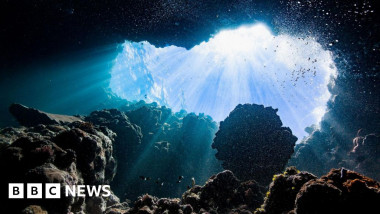Dark oxygen made by deep sea 'batteries'
Scientists have discovered “dark oxygen” being produced in the deep ocean, apparently by lumps of metal on the seafloor.
About half the oxygen we breathe comes from the ocean. But, before this discovery, it was understood that it was made by marine plants photosynthesising - something that requires sunlight.
Here, at depths of 5km, where no sunlight can penetrate, the oxygen appears to be produced by naturally occurring metallic “nodules” which split seawater - H2O - into hydrogen and oxygen.
Several mining companies have plans to collect these nodules, which marine scientists fear could disrupt the newly discovered process - and damage any marine life that depends on the oxygen they make.
